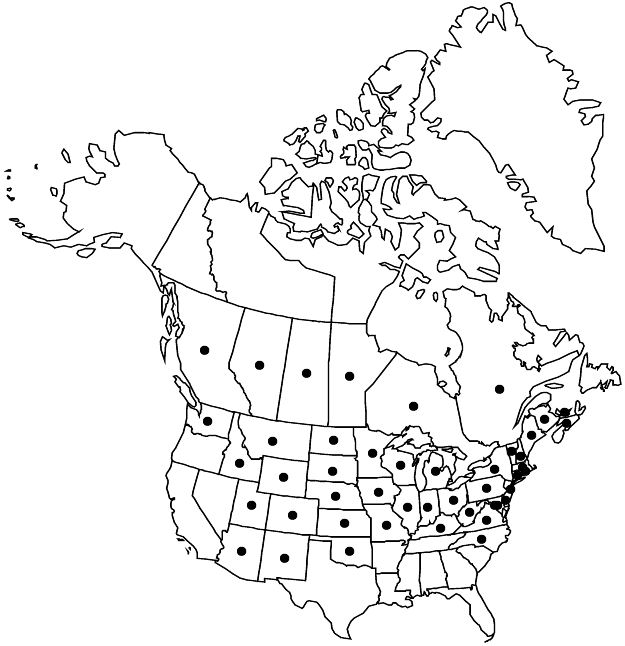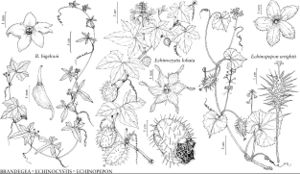Echinocystis lobata
Fl. N. Amer. 1: 542. 1840.
Leaves: petiole 1–4 cm; blade 2–8(–12) cm, lobe apex acute, sinuses rounded, surfaces glabrous or slightly scabrous, hair bases pustulate. Inflorescences: staminate racemes 8–14 cm; pistillate peduncles 2–5 cm. Flowers lightly fragrant; corolla 8–12(–16) mm diam. Pepos 3–5 cm, spinules 4–6 mm, glabrous or slightly scabrous. Seeds 12–20 mm. 2n = 32.
Phenology: Flowering May–Sep(–Oct).
Habitat: Bottomland forests and thickets, riparian woods, marshes and marsh edges, thickets in pastures, fencerows, ditches, lake shores, railroad banks, dunes
Elevation: 0–2000 m
Distribution

Alta., B.C., Man., N.B., N.S., Ont., P.E.I., Que., Sask., Ariz., Colo., Conn., Del., D.C., Idaho, Ill., Ind., Iowa, Kans., Ky., Maine, Md., Mass., Mich., Minn., Mo., Mont., Nebr., N.H., N.J., N.Mex., N.Y., N.C., N.Dak., Ohio, Okla., Pa., R.I., S.Dak., Utah, Vt., Va., Wash., W.Va., Wis., Wyo.
Discussion
Echinocystis lobata is sometimes cultivated in arbors for its showy white flowers (staminate) in long inflorescences. Its occurrence in the western United States is sporadic.
Selected References
None.
